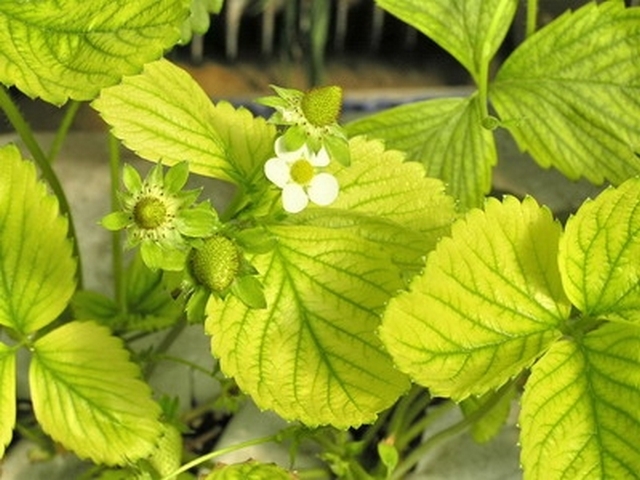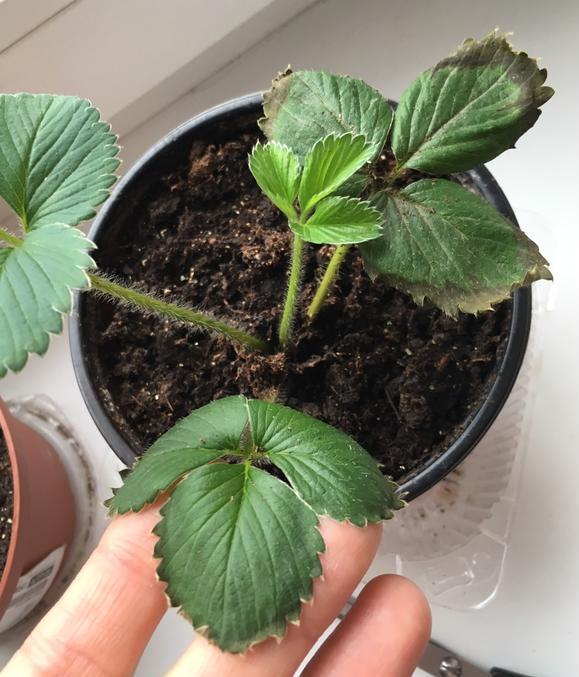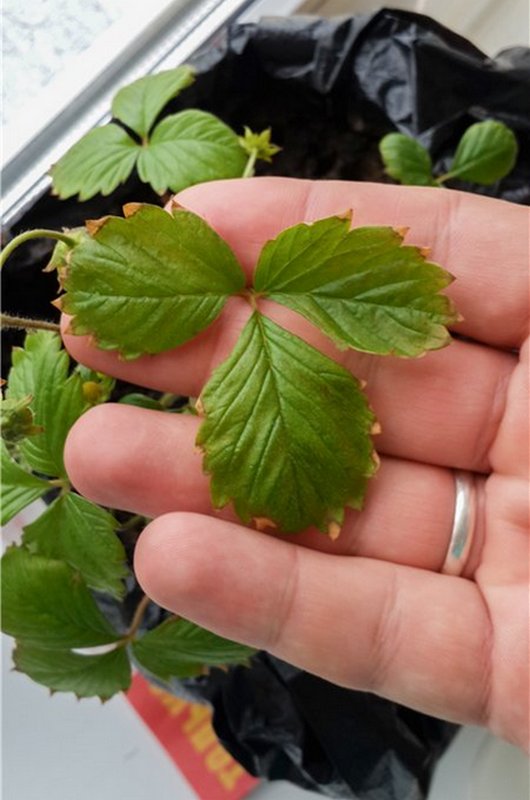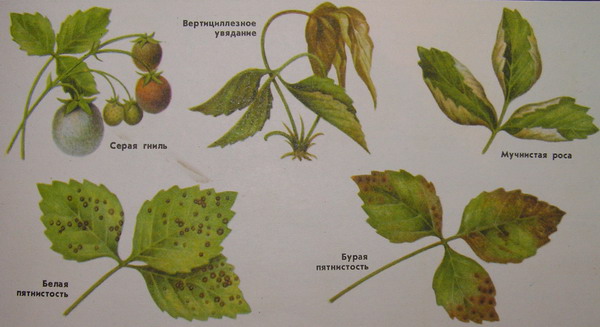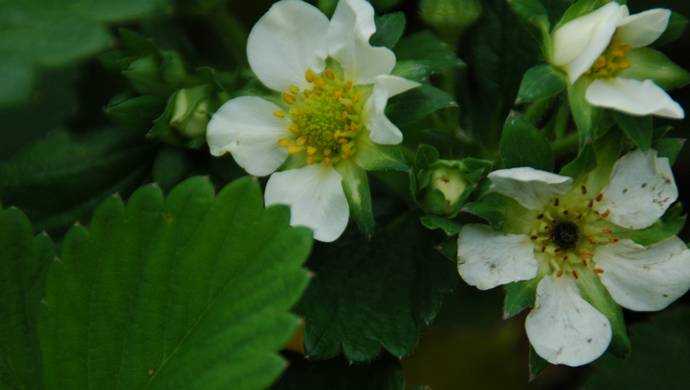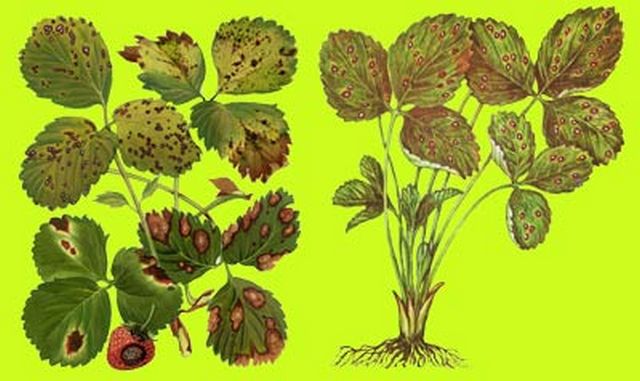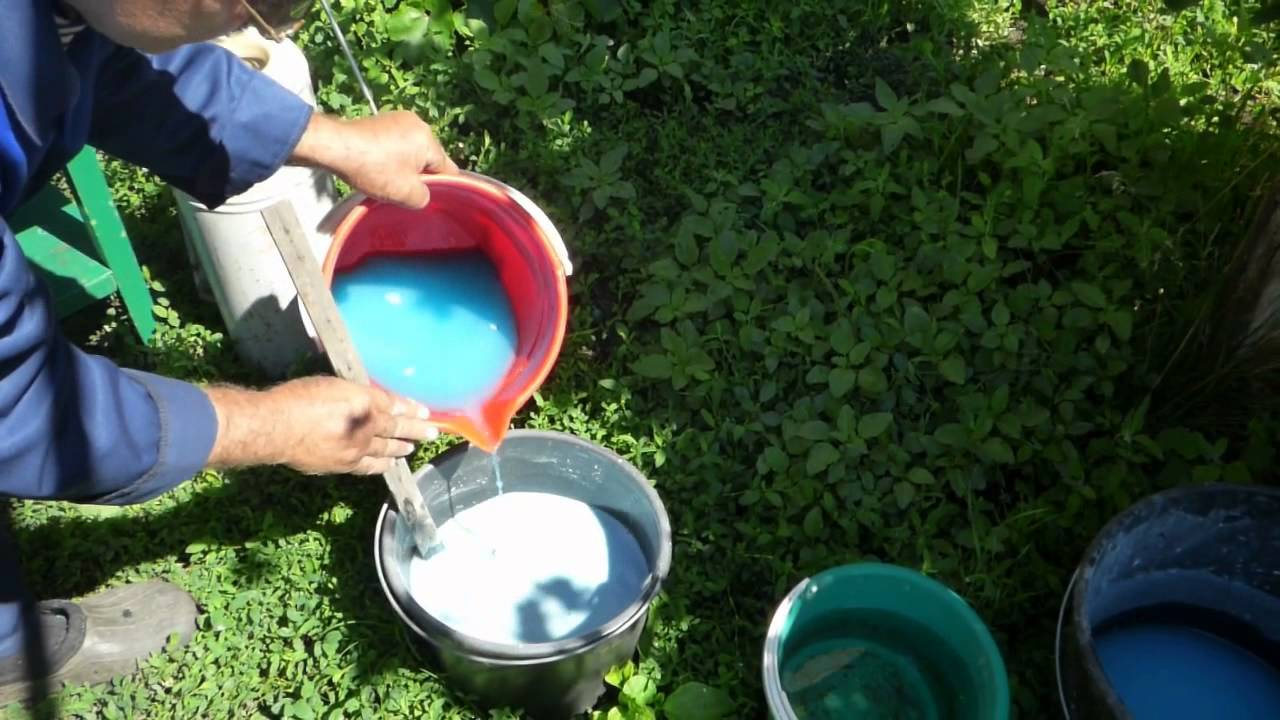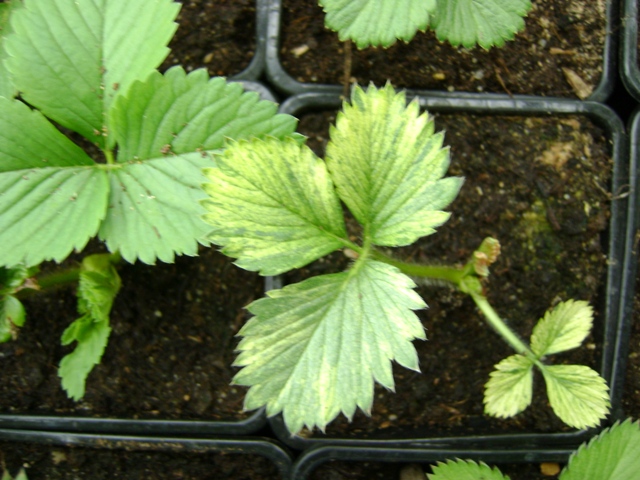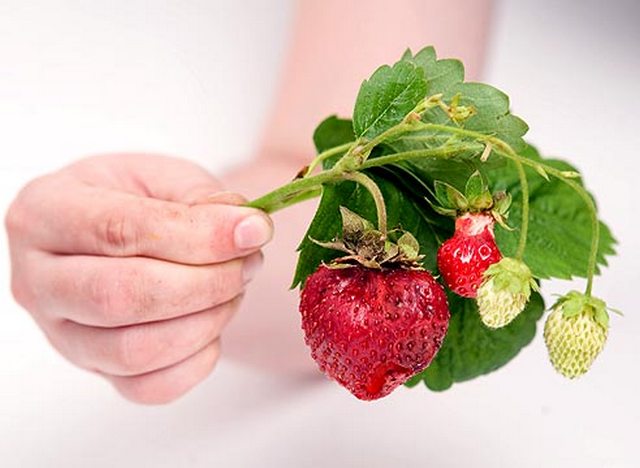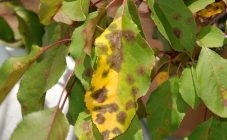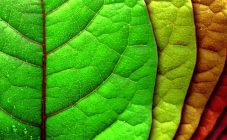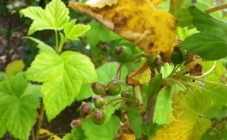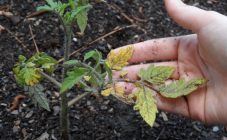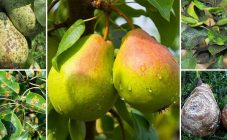Content:
- Leaves turn yellow
- The edges of the leaves dry
- Leaves turn red
- Leaves turn white
- Leaves curl
- The edge of the sheet darkens or rusts
- The middle of the flower turns black
- Gray rot
- Wrinkled leaves
- Brown spot
- Fusarium wilting of strawberry leaves (fusarium) Fusarium wilt symptoms:
- Preventive measures
- From answers to common questions
If the strawberry foliage turns yellow, the answer is improper care of the bushes, a lack or excess of vitamins and minerals, diseases and harmful insects. It is important to understand the root causes of the disease and try to eliminate them. Sometimes it takes a holistic approach to deal with a problem.
The cultivation of garden strawberries depends on reliable care. Violation of agricultural techniques when growing plants is fraught with the development of phyto-diseases. Not all diseases are treated: sometimes infected bushes, and sometimes the entire area of strawberries, must be destroyed. The appearance of pests causes no less harm to strawberry plantings. Processing a strawberry plantation in autumn will sometimes reduce crop loss, as well as protect against diseases and harmful insects.
Often, gardeners ignore the symptoms of infection of strawberry bushes with infectious pathologies. Berries and leaves become tasty prey for parasites. This is one of the reasons for the loss or destruction of crops. Therefore, it is useful for summer residents to navigate the symptoms of strawberry diseases in order to take timely protective measures and ensure prevention.
Leaves turn yellow
Why do strawberry leaves turn yellow, what should I do? At times, yellowing of foliage leads to a deficiency of magnesium and nitrogen in the soil. With a lack of magnesium, dolomite flour is added. Nitrogen hunger is fought by the introduction of mineral fertilizers and organic matter into the land. Strawberries are fed with nitrogen every year with the arrival of spring.
If strawberries have yellow foliage with a lemon tint, the plants suffer from non-infectious chlorosis. The disease develops in conditions when the root system lacks heat, and it is not able to provide the leaves with nutrients. The leaves of the strawberry turned yellow - it's time to make foliar feeding with a composition with iron and water the beds with warm liquid.
The viral disease xanthosis is also responsible for yellowed strawberry leaves. It is spread by infected seedlings and aphids. Phyto-disease is not treated. An important role is played by preventive measures: treating the beds in spring and autumn with a Bordeaux mixture (2-3%) or nitrafen solution (1.5%).
The edges of the leaves dry
Foliage dries up with improper care or contamination of strawberries with harmful insects and diseases. Lack of attention and inaction leads to a decrease in strawberry yields. Infected plantings dry up completely. The main thing is to find out why the edges of the leaves of strawberries dry and what to do.
Among the causes of drying leaves strawberries emit:
- lack of dressing;
- incorrect watering;
- pests.
The appearance of the problem is caused by a shortage of nitrogen fertilizer, but its excess also harms strawberries. Moderate watering is carried out in the evening. Chemicals will help out from harmful insects.
The leaves of the strawberry will dry out if the plantings are thickened, or the root system of the bushes is damaged by parasites. Perhaps the crop rotation is disturbed: strawberries have been occupying the same plot for more than 5 years.
Thickened plantings are thinned out. After harvesting, it is recommended to mow the strawberry plantation and burn the leaves. Then it is treated with colloidal sulfur. After the beds, they loosen and apply fertilizer.
Leaves turn red
The appearance of red spots on the foliage of strawberries, which gradually darken, indicates a disease. It is important for summer residents to know why strawberry leaves turn red in May and what to do in this case. If the leaves of the strawberry turn red, this signals the infection of the bushes with a brown fungus. Fungal spores overwinter in fallen leaves. It is required to bring the cottage in order before the onset of winter.
The spores of the fungus multiply intensively when the yard is warm and damp. When the fungus enters the strawberry leaves, red specks appear. Little by little, the red blotches grow and turn purple. Taking a closer look, in the redness on the sheets, you can find points - the location of fungal spores.
The remaining strawberries need to be processed. Use:
- Euparen;
- Oxyhom;
- Falcon.
Preventive measures:
- removal of diseased and fallen leaves;
- spraying strawberries with a Bordeaux mixture: during the formation of buds, a week after the first spraying, after harvesting.
Leaves turn white
Light exposure and nitrogen content affect the color change of the strawberry leaf. When watering strawberries with carbamide (2 tablespoons per 10 liters of water), the foliage changes its white color within 14 days to a dark green color. To avoid problems, the bushes are fed in October or with the arrival of the spring season, after removing the covering material.
Leaves curl
Common reasons why strawberry leaves curl include:
- non-compliance with crop rotation;
- dry land;
- poor nutrition;
- transparent tick;
- very old site;
- powdery mildew;
- viral diseases.
Compliance with agrotechnical rules prevents twisting of strawberry foliage:
- Acidified soil (acidic pH 5 and below) is deoxidized a year before planting strawberries. On acidic soil, crops poorly absorb the required components.
- Before planting strawberries, the whole complex of fertilizing is introduced into the ground: organic fertilizers, mineral micro- and macroelements.
- Prevent thickening of plantings, overgrowing of the site with weeds and mustaches.
- The leaf will not curl if the soil is moderately moistened in the root zone up to 25 cm.In the phases of budding, flowering and fruiting, it is watered with an overflow or through a drip system: rot causes sprinkling.
- Mulch helps to retain moisture in the soil.
- The use of Zircon, an immunity stimulant, increases the drought resistance of strawberries and resistance to other harmful effects.
The edge of the sheet darkens or rusts
Often, yellow spots in the form of an oval or circle are found on the inside of the strawberry leaf plates. At first, the spots are small and inconspicuous. However, the illness gradually progressing... The stains have a rusty color of the edge, the volume increases. In appearance, the mushroom looks like mold, only with a catchy color.
Failure to take action provokes the fusion of orange papules, which completely cover the leaf and take nutrients from the strawberries. As a result, the foliage falls off, the bush dies.
If the first manifestations of the disease are found, it is important to treat the seedlings with antifungal drugs in a timely manner. Otherwise, the loss of the entire crop is possible.
How to resist:
- Spread polyethylene under a sick bush. Thus, strawberries are saved from spreading spores to other seedlings.
- Wearing gloves, carefully cut off the affected leaves (to the root).
- After the operation, the foliage is destroyed away from the strawberry beds.
How to fight
Processing of strawberry bushes with special means is required:
- Titanium;
- Baktofit;
- Agrohealer.
Most summer residents note the productivity of fungicides. However, it is helpful to keep safety in mind.
To protect strawberries from rust, crops are treated in spring with a Bordeaux mixture (1%).
The middle of the flower turns black
If the core of the flower turns black, the cause is harmful insects. The strawberry weevil is a small 2mm black beetle that will damage crops. After wintering in mulch or fallen leaves it settles on berries.
At the budding stage, the parasites lay eggs in inflorescences. 0.35 mm eggs appear on early ripening strawberries. The larvae gnaw the middle of the flower and feed for a month and a half.
Weevil infestation symptoms:
- drying of peduncles;
- the formation of small holes in the petals and foliage of flowering plants;
- black color of the core.
If the strawberry flowers turn black, you don't have to wait for the fruits. Only unaffected peduncles will bear fruit.
The parasite is fought with folk remedies:
- planting garlic in the garden;
- treatment with iodine solution after harvesting berry harvest: for 10 liters of water 0.5 tsp;
- spraying a plot of strawberries with boric acid after snowmelt: 10 g per 10-liter bucket of liquid.
Gray rot
The disease is warned by brown spots with a fluffy bloom on strawberries. Gray rot of strawberries occurs during prolonged rains, quickly passes to the nearby fruits. Spotted berries will need to be collected and eliminated. If leaf stalks are affected, the strawberry seedling is destroyed.
Prevention:
- covering the plot with agrofibre - will get rid of weeds, prevent berries from coming into contact with the soil;
- before budding, processing of strawberries with a Bordeaux mixture (2-3%) or iodine - 10 drops per 10 liters of liquid;
- avoiding dense planting of seedlings;
- trimming part of the leaves on strawberries for better ventilation and ripening.
Wrinkled leaves
The disease manifests itself in the spring with the growth of foliage. Young leaves are characterized by:
- stopping growth;
- curvature;
- brown;
- drying out.
The plate has a wrinkled surface: the growth of tissue stops at the spot of the spots. Aphids carry the disease.
To combat wrinkling, karbofos is used (for 10 liters of water, 20-30 g of the drug). Recommend planting marigolds and garlic, removing diseased bushes.
Brown spot
Sometimes brown rounded spots appear on strawberry leaves. The rapid spread of the fungus contributes to leaf spotting within a week.
This is not the end of the brown spotting of strawberries. In the middle, the speck brightens, a hole forms, the leaf rots. Disputes gradually move to the stem and roots.
Euparen and Ridomil help to resist disease.
Phyto-diseases: symptoms and treatment
Strawberry verticillary wilt
A dangerous fungal disease is the persistence of spores in soil up to 15 years. Strawberries are also infected through garden tools.
Disease manifestations:
- dried lower leaves, which differ in colors: brown and reddish;
- dwarf dimensions of the ground part;
- strawberry bushes wither, as a result completely dry out.
Saving a strawberry bush is pointless. The activity of the fungus is manifested when the berries are set and ripened. The use of pesticides for verticillary wilting of strawberries is fraught with human poisoning if they get on the table.
Affected plants are removed and burned. The soil is processed with Bordeaux mixture or Fitospirin after harvesting berries. In the greenhouse, the topsoil is removed.
Prevention includes:
- change of crop rotation;
- use of high-quality planting material;
- processing of the root system of strawberries before planting with biological products: Humate K (for 1 liter of 15 g) and Agata 25K (for 1 liter of 7 g).
Fusarium wilting of strawberry leaves (fusarium)
Fusarium wilting symptoms:
- foliage takes on a brown tint:
- the edge of the leaves is bent up;
- fruiting decreases;
- the fibrous roots die off, causing the death of the strawberry.
The disease does not respond to treatment. Infected strawberry bushes are eliminated with fusarium.
Preventive measures:
- strawberry seedlings are bought in proven nurseries;
- 4 years later, they are planted in new beds, preferably at the end of August or at the beginning of September;
- processing before planting the roots of strawberry seedlings with a growth stimulant, earth - with an iodine solution from a fungal infection.
Chlorosis
If the leaves of strawberries turn white, the root cause lies in the lack of useful elements in the soil. A similar situation occurs if there is not enough in the ground:
- manganese;
- gland;
- boron.
Their shortage provokes the development of chlorosis. The disease manifests itself several months after planting strawberries or 3-4 years later. Iron sulfate, which is dissolved in 10 liters of water, will help out; you will need a teaspoon of the product. Strawberries are poured with warm water under the root and foliar feeding is performed.
Powdery mildew
Phyto-disease symptoms:
- the leaves are twisted with a tube;
- changes from green to purple in color;
- foliage is covered with white bloom;
- deformed berries with bloom are formed;
- the taste of berries changes.
With powdery mildew on strawberries, control measures are taken:
- spray the beds with copper sulfate;
- treated with an iodine solution, it is possible with the addition of milk;
- before budding and after harvesting, they are watered with Topaz (for 10 liters of liquid 5 g), copper-soap emulsion (for 10 liters of water, 20 g of copper sulfate and soap), Azocene (for 10 liters of water 20 g).
Preventive measures
Preventive measures will make the strawberry harvest richer. To do this, they focus on:
- selection of suitable strong seedlings;
- correct selection of the site;
- burning affected bushes;
- moderate top dressing;
- spraying strawberries from harmful insects;
- avoiding cross-pollination of various varieties;
- plant transplantation, ideally every 2 years - with the age of the strawberry bush, the number of diseases and parasites increases;
- it is undesirable to plant strawberries after tomatoes, peppers, eggplants, potatoes for at least 3 years;
- thorough tillage: a steep pitch is also suitable for eliminating fungal spores and larvae;
- weed removal;
- correct watering.
From answers to common questions
Strawberries grow poorly
The poor growth of strawberries is sometimes to blame for the thickening of the plantings, a deficiency of nutrients. It is necessary:
- thinning strawberry planting;
- loosening;
- feeding.
Just enough recharge Ruby.
Other reasons:
- depletion of the soil;
- growth of trees in the range of 7 m;
- degeneration of the strawberry variety.
The work is going in the following directions:
- rejuvenating strawberry bushes;
- watering;
- soil change.
Sick bushes are treated or discarded. They are easy to notice by the brown color of the leaves, which are folded, or spotting. Disease is fought in a different way.
Strawberries wither and die on the vine
From time to time in the beds, strawberry bushes dry out and die. The pests in the garden explain where the trouble came from. Mice, ants, bears gnaw the roots of berries, provoking wilting and death. They act immediately.
With the correct planting of strawberries, systematic watering and the absence of parasites, the bushes dry up - strawberries have late blight. With such an infection, the leaves are yellow and dry. To prevent ailment, the beds are sprayed with a remedy for late blight, the diseased strawberries are destroyed.
Strawberry fruits become dry and sour
Transient late blight is one of the reasons why garden strawberries dry out. Green and ripening strawberries are infected. The berry has a soft rotting skin, a bitter-sour taste. Over time, the fruits become embalmed. Drops of dew or rain excite late blight.
To prevent late blight, strawberries are processed before flowering:
- Trichocin and Ridomil;
- Quadris and Glyocladin;
- Planriz and Metaxil.
Means are diluted with water, in accordance with the instructions, strawberry bushes are sprayed three times during the growing season.
Acquaintance with the symptoms of strawberry diseases and methods of struggle will help summer residents cope with phyto-diseases and enjoy the fragrant fruits.

